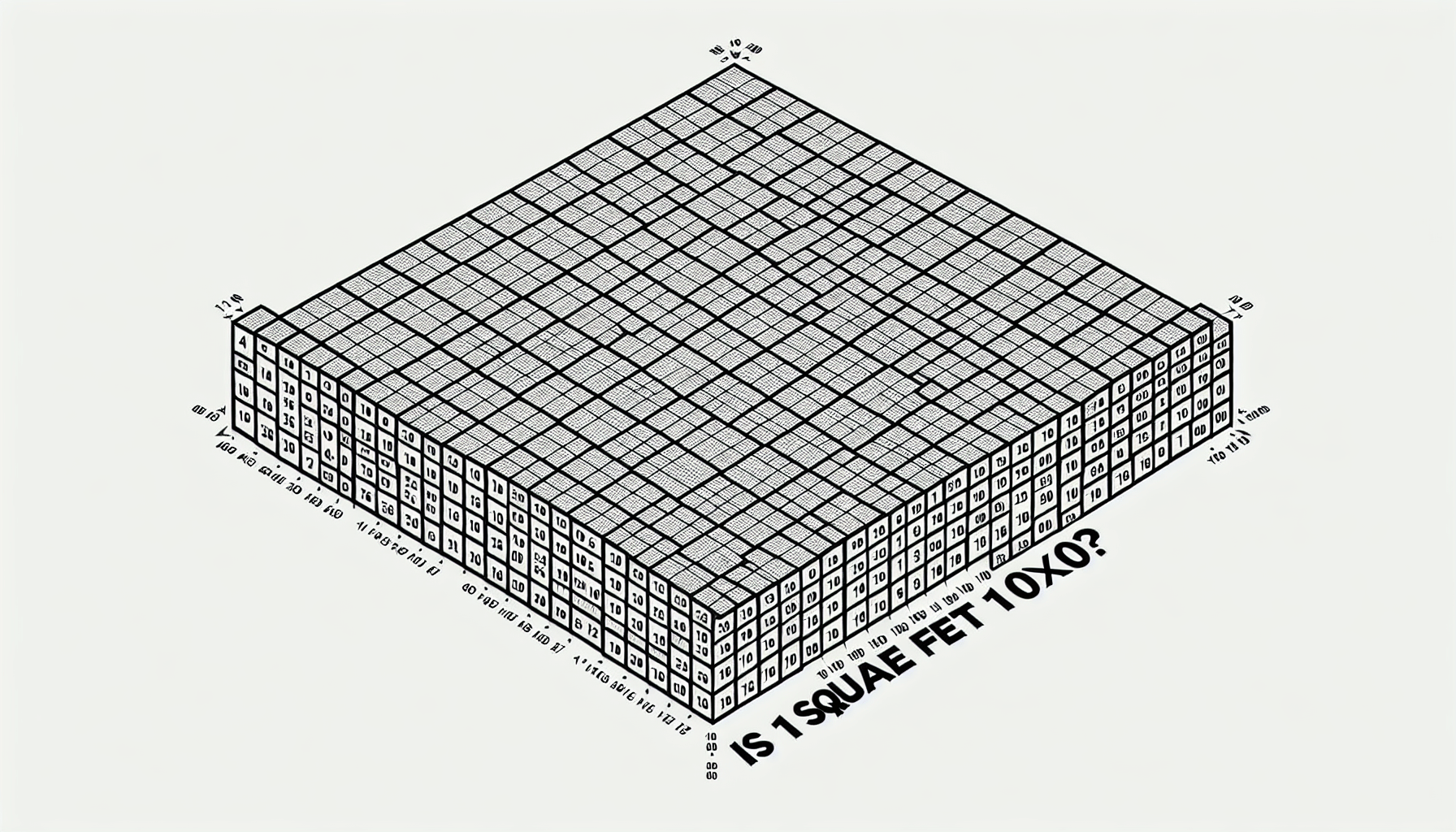Hey there! Today we’re going to explore the simple yet sometimes confusing question: Is 10 square feet equal to 10×10? The concept of square feet and dimensions can sometimes be tricky, so let’s break it down together. By the end of this article, you’ll have a clear understanding of the relationship between square feet and dimensions. Let’s dive in and clear up any confusion! Is 10 Square Feet 10×10?
Have you ever wondered if 10 square feet is the same as a 10×10 square? Let’s break down the math and find out in this informative article.
Understanding Square Feet and Square Units
When we talk about square feet, we are referring to a unit of area that measures the size of a two-dimensional space. One square foot is equal to a square with sides that are each one foot long. So, if you have a square that is 1 foot by 1 foot, you have 1 square foot of area.
Converting Square Feet to Square Units
To convert square feet to square units, you need to multiply the length by the width of the square. For example, if you have a square that is 2 feet by 2 feet, you would have 4 square feet (2 ft x 2 ft = 4 sq ft).
The Concept of 10×10
If we think about the concept of 10×10, we are talking about a square shape with both sides measuring 10 units each. In this case, if we are referring to square feet, a 10×10 square would have an area of 100 square feet.
Putting It All Together
So, to answer the question – Is 10 square feet equal to a 10×10 square? The answer is no. A 10×10 square would actually measure 100 square feet, not 10 square feet.
How to Calculate the Area of a Square
Calculating the area of a square is a simple process. To find the area of a square, you need to multiply the length of one side by itself. This formula can be written as:
Area = Side length x Side length
Example Calculation
Let’s say we have a square with each side measuring 5 feet. To find the area of this square, we would use the formula:
Area = 5 ft x 5 ft = 25 sq ft
So, the area of a square with 5-foot sides would be 25 square feet.
Common Misconceptions About Square Feet
There are some common misconceptions when it comes to understanding square feet and square units. Let’s address a few of these misconceptions:
Misconception #1: Square Feet vs. Linear Feet
One common mistake is mixing up square feet with linear feet. Linear feet refer to the length of an object in feet, while square feet measure the area of a two-dimensional space. Remember, square feet require two dimensions (length and width), while linear feet only have one dimension.
Misconception #2: Scaling Up Square Feet
Another misconception is that scaling up square feet by a factor of 10 will result in a corresponding increase in area. As we discussed earlier, a 10×10 square is not the same as 10 square feet. The area increases exponentially when scaling up a shape.
Practical Applications of Understanding Square Feet
Understanding square feet is essential for various real-world applications. Let’s explore some practical examples of when knowing the area of a space is necessary:
Home Improvement Projects
When planning home improvement projects like painting a room or laying down flooring, knowing the square footage of the space is crucial. This information helps you estimate materials needed and costs associated with the project.
Real Estate Transactions
In real estate, square footage plays a significant role in determining property values. Buyers and sellers rely on accurate measurements of square footage to negotiate prices and make informed decisions.
Landscaping and Gardening
For landscaping and gardening projects, knowing the square footage of a garden bed or lawn area helps in selecting the right amount of soil, mulch, or plants needed to fill the space. It also guides in proper spacing and design of the garden layout.
Construction and Architecture
In the construction industry, architects and builders use square footage calculations to design floor plans, determine building materials required, and estimate construction costs. Accurate measurements are crucial for creating structurally sound buildings.
Tips for Measuring Square Footage Accurately
To ensure accurate measurements of square footage, follow these tips when measuring an area:
Use the Right Units
When measuring dimensions, make sure you are using the correct units. For square feet, measure the length and width in feet to calculate the area accurately.
Break Complex Shapes into Smaller Parts
For irregularly shaped areas, break down the space into smaller, more manageable sections. Calculate the area of each section separately and then add them together for the total square footage.
Account for Wasted Space
In areas where large furniture or fixtures are present, adjust the square footage calculation to account for space that cannot be used effectively. This ensures that you have a realistic understanding of the usable space.
Double-Check Your Calculations
After measuring and calculating the square footage of an area, double-check your work to catch any errors or inaccuracies. It’s essential to have precise measurements for accurate results.
Conclusion
In conclusion, understanding square feet and square units is essential for various aspects of our daily lives, from home improvement projects to real estate transactions. Remember that a 10×10 square is not the same as 10 square feet, as the area increases exponentially with larger dimensions. By following the tips for measuring square footage accurately, you can ensure that your calculations are precise and reliable. Whether you’re planning a DIY project or evaluating property sizes, knowing how to calculate and interpret square footage is a valuable skill to have.
